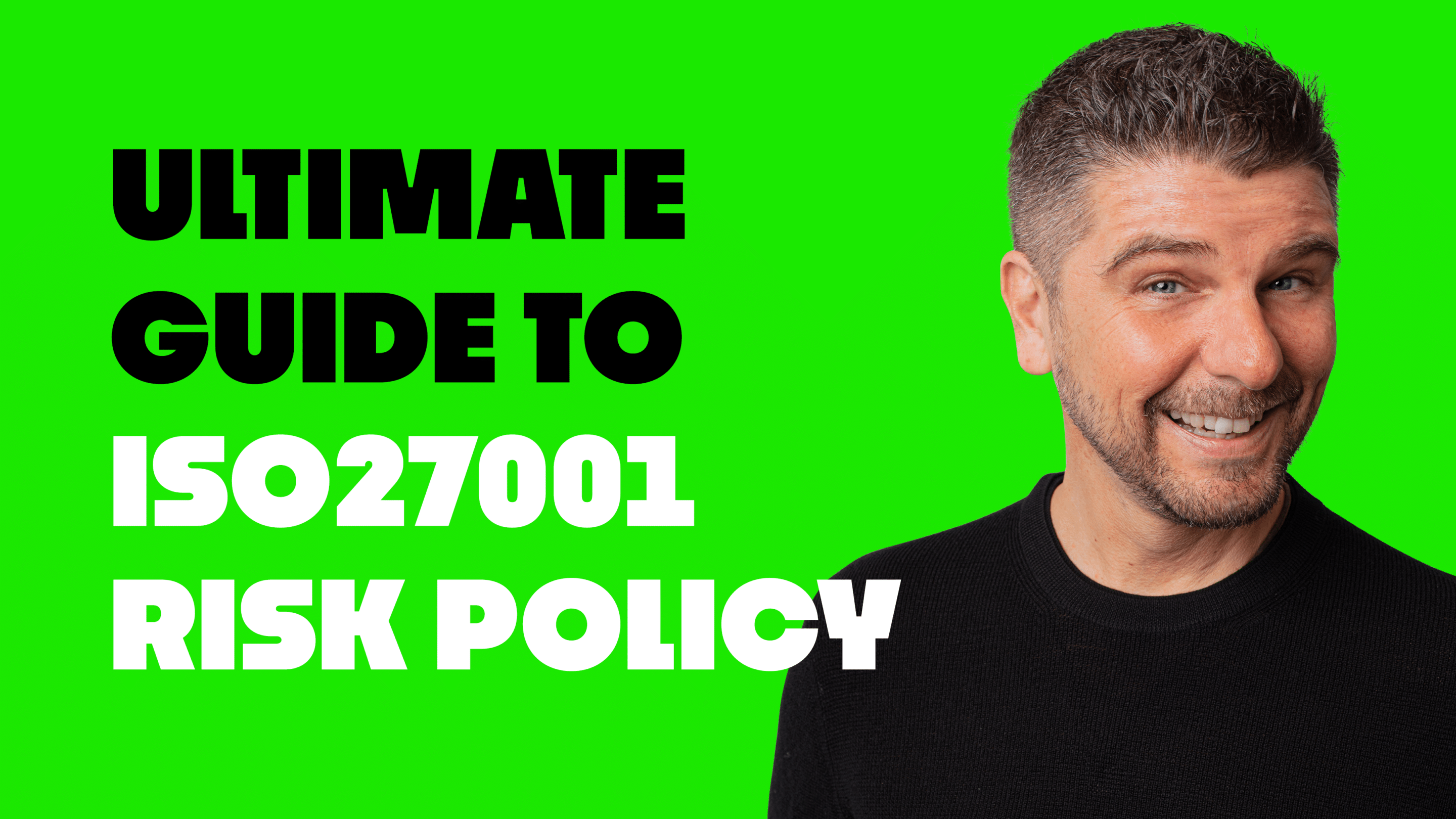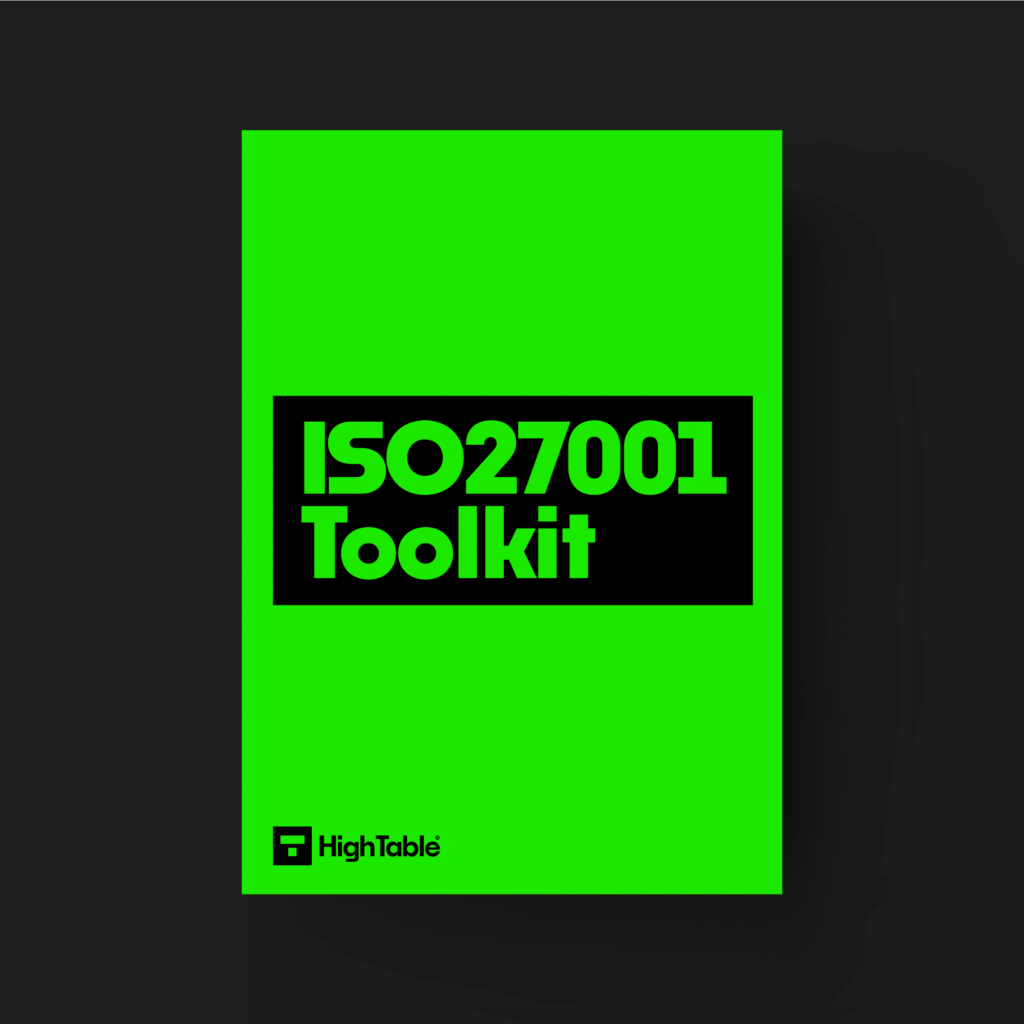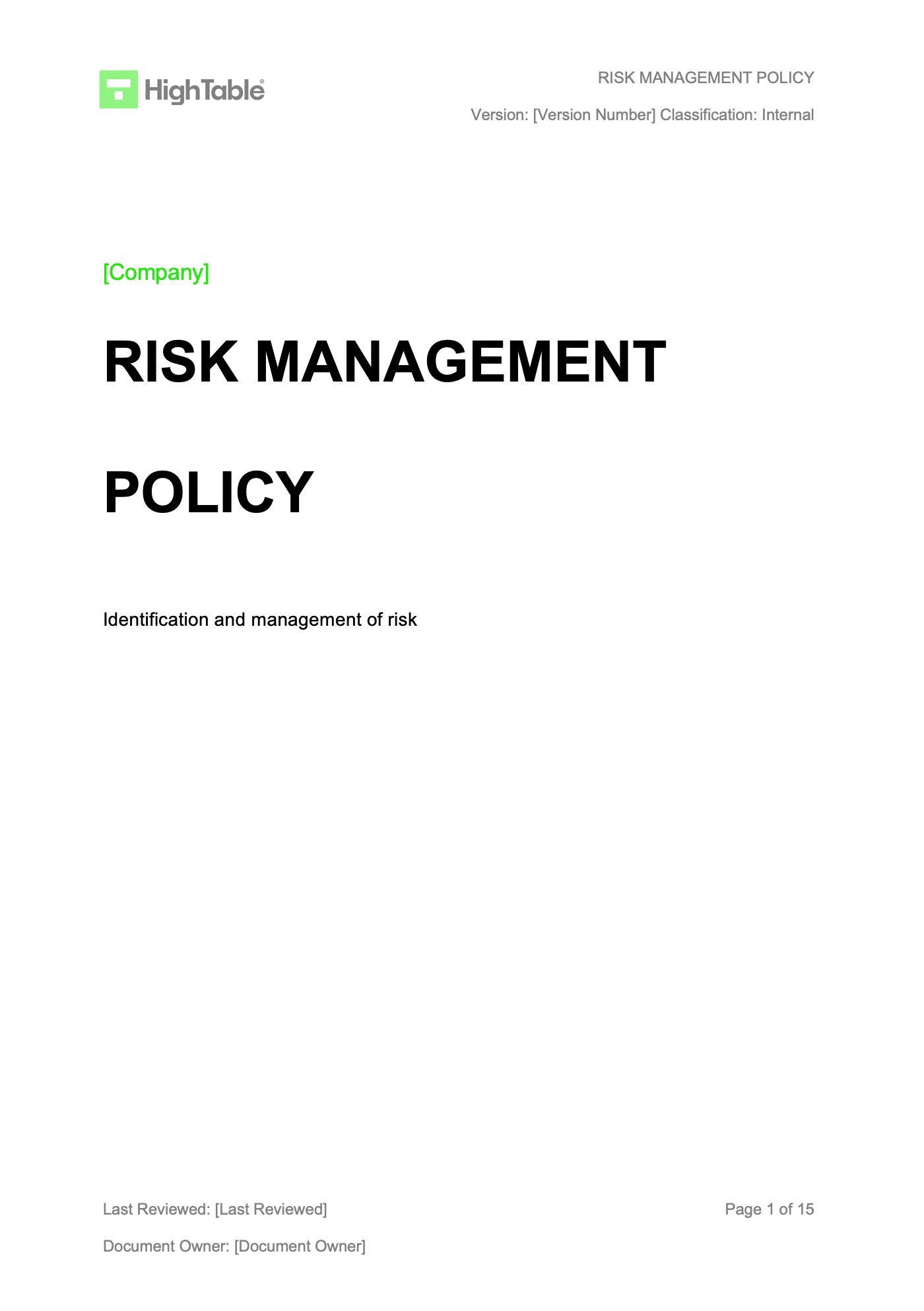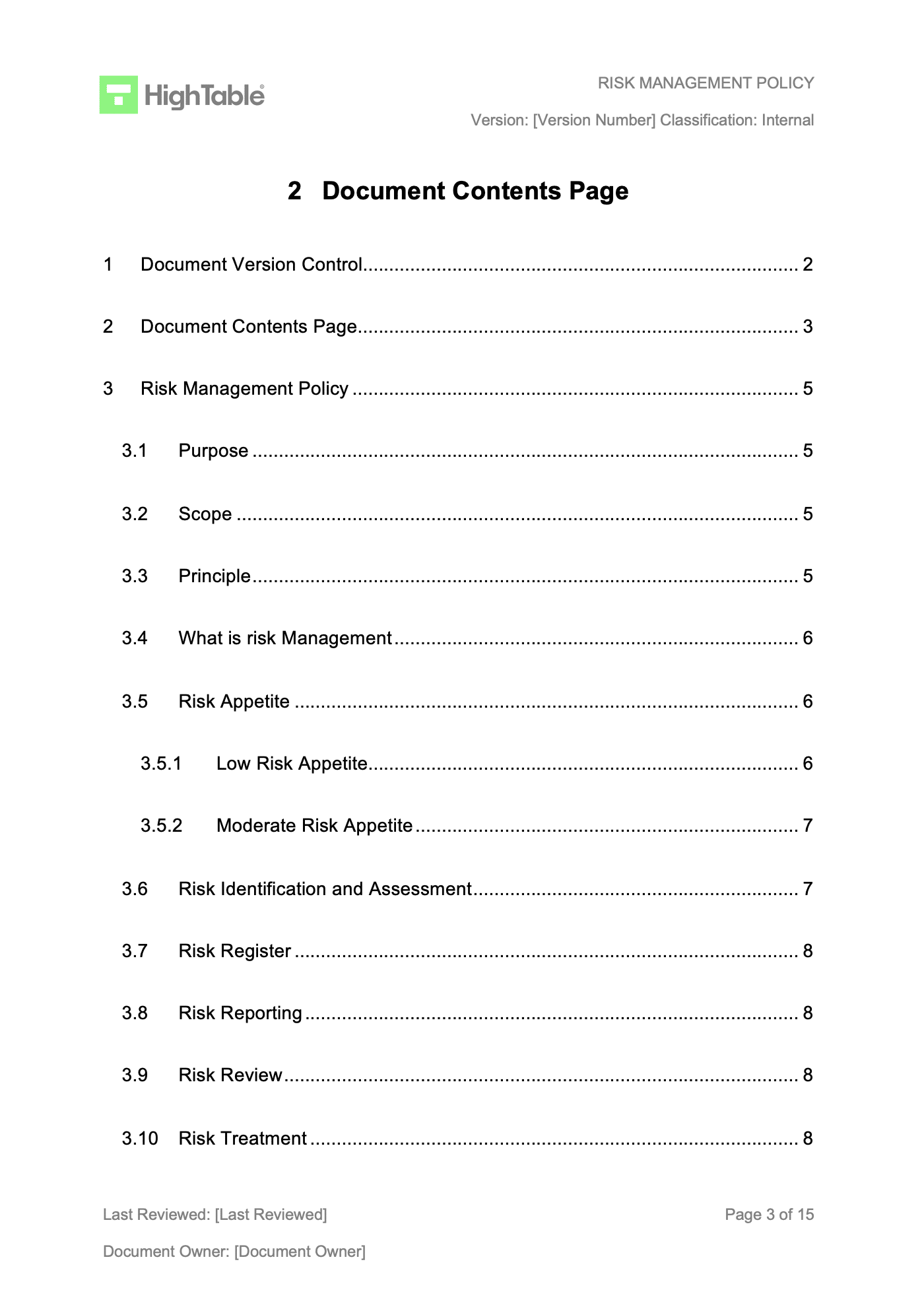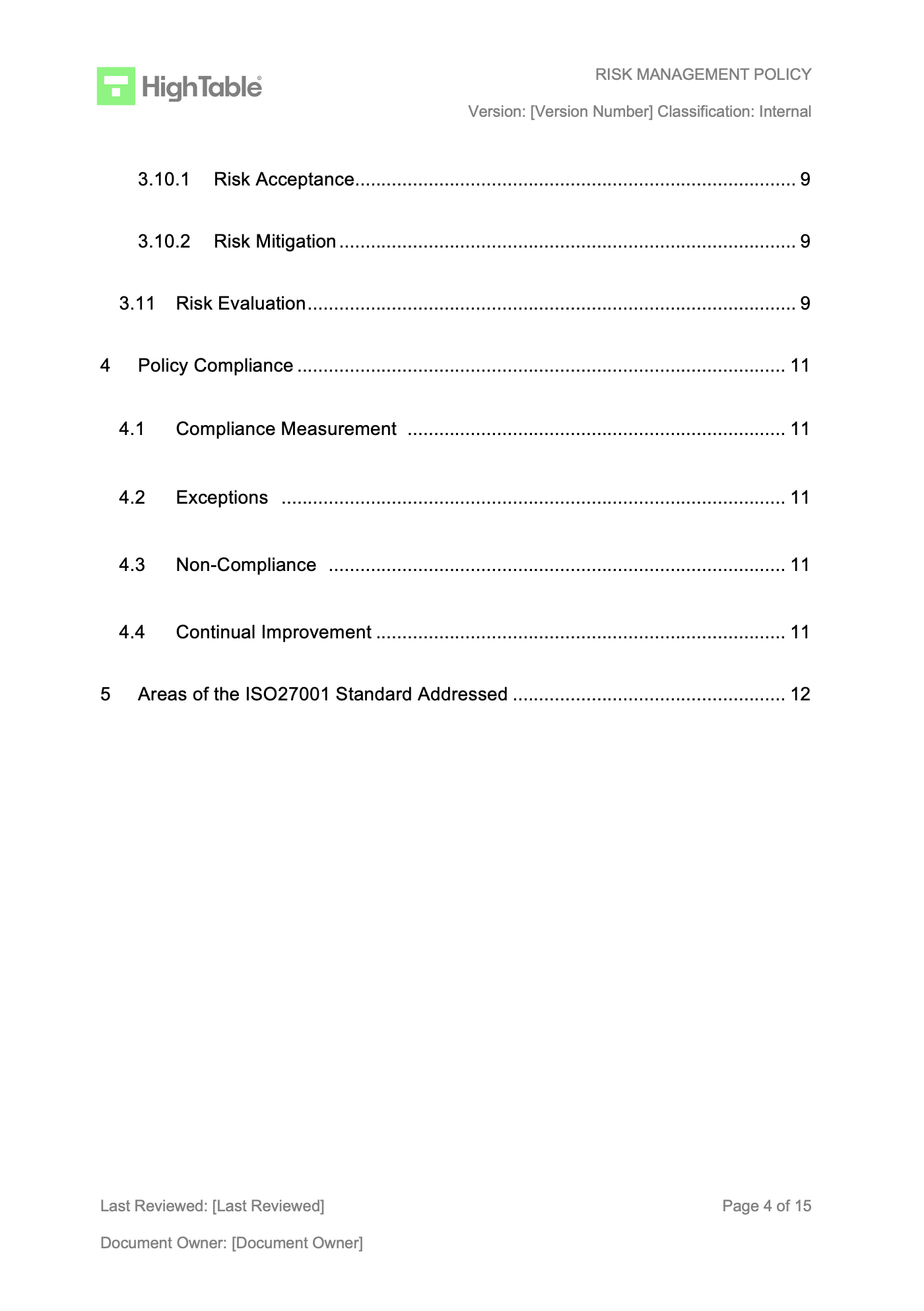Table of contents
- Introduction
- What is an ISO 27001 Risk Management Policy?
- ISO 27001 Risk Management Explained Simply
- ISO 27001 Risk Management Policy Template
- ISO 27001 Risk Management Policy Example
- Watch the ISO 27001 Risk Management Policy Tutorial
- How to write an ISO 27001 Risk Management Policy
- ISO 27001 Requirements for Risk Management
- ISO 27001 Risk Management Policy FAQ
Introduction
In this ISO 27001 Risk Management Policy Ultimate Guide I show you everything you need to know about the ISO 27001 Risk Management Policy and exactly what you need to do to satisfy it to gain ISO 27001 certification.
You will learn
- What is an ISO 27001 Risk Management Policy?
- How to write an ISO 27001 Risk Management Policy
- ISO 27001 Risk Management Policy Template
- ISO 27001 Risk Management Explained Simply
What is an ISO 27001 Risk Management Policy?
The ISO 27001 Risk Management Policy sets out the guidelines and framework for how you identify, manage and mitigate risks to your information security.
The policy addresses risks by ensuring that robust risk management processes are in place.
It is the foundation upon which ISO 27001 is built.
ISO 27001 Risk Management Explained Simply
What is ISO 27001 Risk Management?
ISO 270001 Risk management is about setting the best course of action to take for those elements of uncertainty.
Those known knowns, unknown unknowns, and known unknowns.
Not everything needs to be prevented but risk management wants you to acknowledge the risk and have taken a positive action to address it.
You could choose to accept the risk and do nothing, or to try to reduce the risk or to remove the risk entirely.
Risk management is about indemnifying and then making appropriate business decisions as to what to do about those risks.
ISO 27001 and Risk Management
I like a risk based management approach to information security. It is a sensible approach to information security. It is a grown up approach. It allows the business to decide what controls to put in place and to what level.
Risk is all about the uncertainty that surrounds future events and the outcomes. We cannot plan for everything but we can have a policy and approach about how we deal with it.
What is the Risk Management Process?
In our approach to that uncertain future we are going to want to identify risk. To the best of our ability.
Then we are going assess that risk for what it means to us and what it could do to us.
Once we understand the risk we are going to act on it.
Doing nothing is an acceptable answer.
This is accepting risk.
We all accept a certain level of risk every day in our personal lives.
This is no different in business.
Some risks we are going to control and manage.
Where we have the resources to do so proportionate to the risk before us.
ISO 27001 Risk Management Policy Template
The comprehensive ISO 27001 risk management policy template is designed to fast track your implementation and give you an exclusive, industry best practice policy template that is pre written and ready to go.
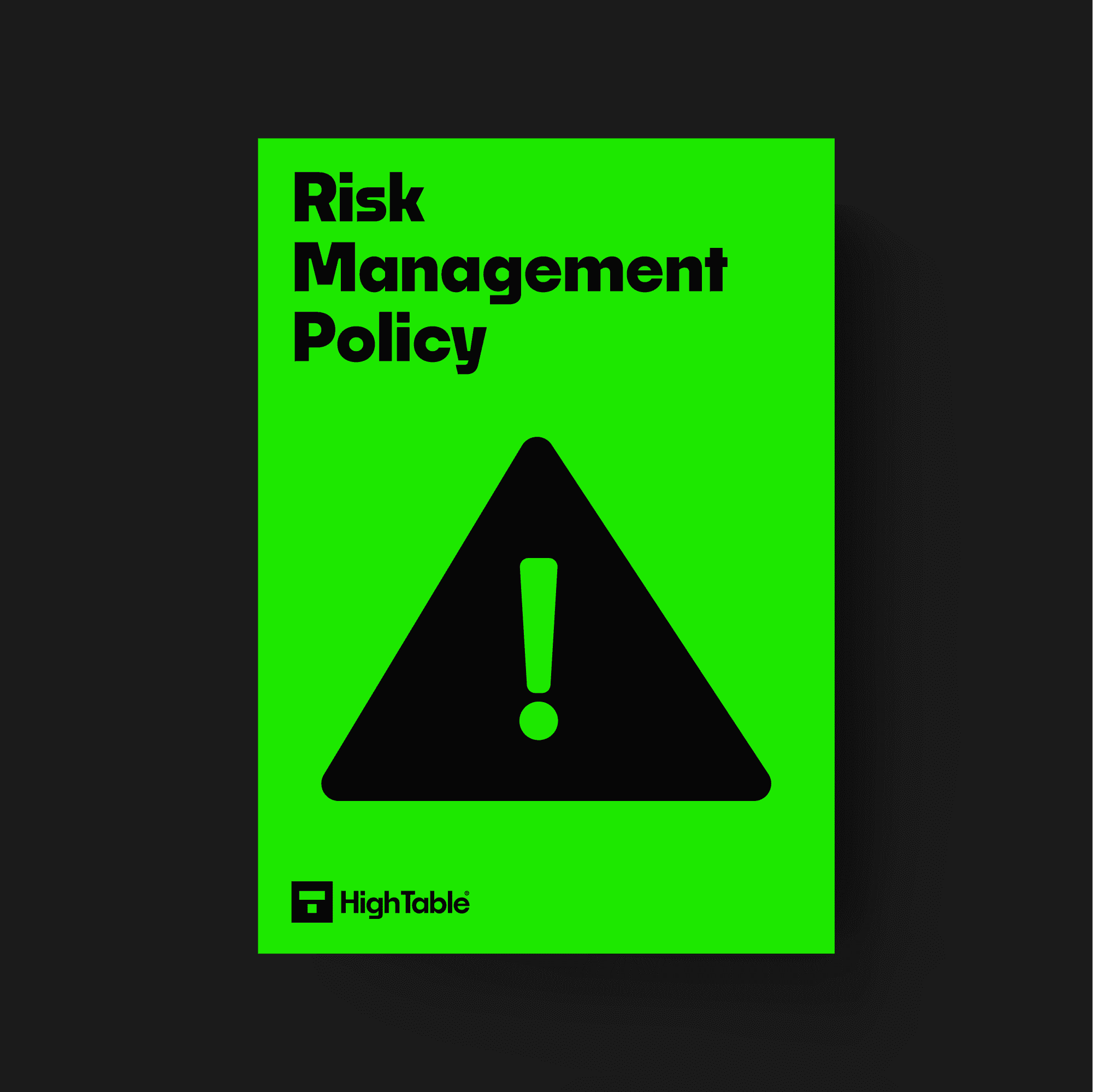
DO IT YOURSELF ISO 27001
All the templates, tools, support and knowledge you need to do it yourself.
ISO 27001 Risk Management Policy Example
This is a great example of the risk policy. Taking the first 3 pages being the contents of what it includes. You can also view a detailed example ISO 27001 Risk Management Policy PDF.
Watch the ISO 27001 Risk Management Policy Tutorial
If you prefer to watch a tutorial rather than read then you can watch – How to write an ISO 27001 Risk Management Policy ( + template )
How to write an ISO 27001 Risk Management Policy
General
ISO 27001 is a risk based management system rather than a rule base management system so the identification and appropriate management of risk is fundamental and key.
Some risks are acceptable to a business and so not all controls may be required and not all risks need to be fully treated.
In a rule based system you either have the control or you don’t, you pass or you fail.
ISO 27001 takes a more grown up approach putting the company in control.
In the risk management policy we
- define the risk appetite of the business
- cover the identification of risk
- set out how risks are assessed and evaluated
- describe how risks are recorded
- explain the risk register
- document the treatment of risks.
- describe risk reporting
It is a tool in our business arsenal and it forms part of the mandatory ISO 27001 documents.
It gets everyone on the same page and gives us a standard approach to risk.
ISO 27001 Risk Management Contents Page
First we are going to look at the risk policy contents. As we go through the creation of our policy we are going to look at
- the purpose
- the scope
- the principle
- what is risk management
- what risk appetite is
- low risk appetite
- moderate risk appetite
- risk identification
- risk assessment
- risk register
- risk reporting
- risk review
- risk treatment
- risk acceptance
- risk mitigation
- risk evaluation
- at policy compliance
ISO 27001 Risk Management Purpose
The purpose of the ISO 27001 Risk Management Policy is to set out the risk management approach for the company for information security.
ISO 27001 Risk Management Scope
The scope of the ISO 27001 Risk Management Policy is all employees and third party users.
It is also risk management as applied to information security and the confidentiality, integrity and availability of organisation owned data processed, stored and transmitted.
ISO 27001 Risk Management Principle
Information Security Management for the company is based on appropriate and adequate risk and risk management. ISO 27001 is a risk-based management system fundamentally, and underpinned by risk. Risk
is your goto. We base our security on risk.
What is Risk Management?
If we don’t know, risk can be identified as the threat or possibility that an action or event will adversely or beneficially affect an organisation’s ability to achieve its objectives. Risk management can be defined as –
the systematic application of principles and approach and a process by which the company identifies and assesses the risks attached to its activities and then plans and implements a risk response.
Risk Appetite
Overall the company has a moderate risk appetite or a risk appetite appropriate to you. Which means risks are mitigated in a cost effective and proportionate manner to the risk and some risk acceptance is acceptable based on business need.
Low risk appetite – the company actually has a low risk appetite to the following which means that risk will not be accepted and that we will have resources allocated to mitigate the risks in a proportionate and
cost-effective manner, these are like no-brainer risks. What do we mean by that? So, you will
now see low risk appetite
- unauthorised access
- use or release of personally identifiable information or sensitive data
- non-compliance with technology laws regulations policies or procedures
- lack of resilience against cyber security threats.
Moderate risk appetite – the following, most, will most likely have resources allocated to mitigate risk in
a proportionate and cost cost effective manner –
- alignment of Enterprise Information Systems data and business practices
- the ability to meet user demands and support a mobile workforce
- technology infrastructure and performance, eg stability, reliability, capability, capacity and duplicative
systems - business resiliency planning and execution risk.
Identification and assessment risk assessments are carried out at a regular interval or at least every 12 months and where there has been or likely to be a significant change risks are identified and assessed at
least for the processing storing or transmitting of confidential, personal or card holder information.
Third party suppliers that are processing, storing or transmitting any confidential, personal or card holder information, new systems, significant changes – an ISO 27001 controls risk assessment is carried out at least every 12 months.
We repeat that. We’re going to at least do an annual full ISO 27001 risk assessment.
Risk Register
All risks are recorded in the company risk register. There’s a company risk register template you can download, the ISO 27001 risk register template. Yes. it’s part of the ISO 27001 Toolkit, the ultimate toolkit for ISO 27001 certification but you’re going to place reliance on that risk register.
Risk Reporting
The risk register is reviewed at the management review team meeting. Risk are reported to the management review team. Significant risks are, being risks identified as requiring the attention of Senior
Management or risk with the score over 20 or risk classified as severe, are reported to the senior management team and form part of the company’s Enterprise risk management reporting.
So, there’s a reference there to scoring that’s included in the risk register.
Risk Review
Risks are regularly reviewed and monitored at the management review team meeting to review the
risk action progress, to ensure the risk action effectiveness and to look at the management of residual risk.
Risk Treatment
All risks are assigned a risk owner for risk acceptance. The decision to accept risks is taken by the relevant departmental manager and or Senior Management. The criteria for accepting risk is
- based on the risk category being categorised as low or it is not cost effective to treat the risk,
- a business or commercial opportunity exists that outweighs the threat and the impact,
- a risk treatment does not exist
- the impact of the risk occurring is acceptable to the company.
Risk Mitigation
Where a risk is to be mitigated a plan of action is approved by the relevant departmental manager and or the management review team and or Senior Management. Responsibility for implementing and managing the plan is assigned. Allocated risks are reported and reviewed at the management review team meeting and recorded in the risk register.
Risk Evaluation
The evaluation of risk impact is, consider, considered on impact to compliance under law, reputation, customers business goals and objectives, financial performance.
ISO 27001 Requirements for Risk Management
The following clauses in ISO 27001 cover risk management and what is required for ISO 27001 certification
ISO 27001 Clause 6.1 Risk Planning
ISO 27001 Clause 6.1.1 Planning General is about planning for risk.
ISO 27001 Clause 6.1.2 Information Security Risk Assessment
ISO 27001 Clause 6.1.2 Information security risk assessment is about the planning for risk assessment.
ISO 27001 Clause 6.1.3 Information Security Risk Treatment
ISO 27001 Clause 6.1.3 Information Security Risk Treatment is about the planning for risk treatment.
ISO 27001 Clause 8.2 Information Security Risk Assessment
ISO 27001 Clause 8.2 Information Security Risk Assessment is about execution and doing of risk assessment.
ISO 27001 Clause 8.3 Information Security Risk Treatment
ISO 27001 Clause 8.3 Information Security Risk Treatment is about execution and doing of risk treatment.
ISO 27001 Risk Management Policy FAQ
The purpose of the ISO 27001 risk management policy is to set out what the company does for information security risk management. It is not how the company does it. How the company does it is covered in the ISO 27001 processes and process documents. Here we are setting out the ‘what’ and the organisations overall approach to key risk management concepts.
ISO 27001 is not an information security management standard as you would understand it but rather it is an information security risk management standard. It is built on the foundation of risk and risk management. With out risk management you cannot comply with the standard.
The risk policy sets out clearly what our approach to risk management is. It is our foundation and our bedrock of the standard.
Responsibility will vary from company to company but usually the ISO 27001 Risk Policy is the responsibility of the information security manager.
The scope of the ISO 27001 risk management policy is risk and risk management as applied to information security and the confidentiality, integrity and availability of company owned, processed, stored and transmitted information.
Information security management for the company is based on appropriate and adequate risk and risk management.
The purpose of the ISO 27001 Risk Management Policy is to ensure risks to information security are identified, managed and addressed in a timely manner.
Risk can be defined as the threat or possibility that an action or event will adversely or beneficially affect an organisation’s ability to achieve its objectives.
Risk management can be defined as the systematic application of principles and approach, and a process by which the company identifies and assesses the risks attached to its activities and then plans and implements risk responses.
A low risk appetite means that you will do what ever you can to remove or reduce the risk. An example a low risk appetite could be
• Unauthorised access, use, or release of personally identifiable information or sensitive data.
• Noncompliance with technology laws, regulations, policies, or procedures.
• Lack of resiliency against cybersecurity threats.
We normally have a low risk appetite when it comes to the law, regulations or things that could cause harm.
A moderate risk appetite means that you will take reasonable steps to remove or a reduce a risk subject to factors such as the costs involved and the needs of the business. Moderate risk is about being proportionate and cost-effective and an example of a moderate risk appetite could be
• Alignment of enterprise information systems, data, and business practices.
• Ability to meet user demands and support a mobile workforce.
• Technology infrastructure and performance (e.g., stability, reliability, capability, capacity, and duplicative systems).
• Business resiliency planning and execution.
ISO 27001 risks are recorded in, and managed via a ISO 27001 risk register.
ISO 27001 risks are reported to the Management Review Team and Senior Leadership.
ISO 27001 risks are recorded, managed and tracked in the ISO 27001 risk register.
The risk register is reviewed at the Management Review Team meeting.
Significant risks being risks identified as requiring the attention of senior management or risks with a score over 20 or risks classified as severe are reported to the senior management team and form part of the company enterprise risk management reporting.
An ISO 27001 risk review is an assessment of the current risks and the identification of new risks.
The organisation must complete at least an annual risk review and record the outcome in risk review meeting minutes.
In addition risks are regularly reviewed and monitored at the Management Review Team meeting to ensure:
• Risk action progress
• Risk action effectiveness
• Management of residual risk
You evaluate ISO 27001 risk based on the impact if the risk materialises and the likelihood of that event occurring. You define an ISO 27001 risk impact score and definition and you define an ISO 27001 risk likelihood score and definition. These two scores are multiplied to create a risk score and the risk score creates your risk rating. Depending on the rating certain actions will be required.
Where a risk is to be mitigated
• A plan of action is approved by the relevant departmental manger and/or the Management Review Team and/or Senior Management.
• Responsibility for implementing and managing the plan is allocated.
• Risks are reported and reviewed at the Management Review Team meeting and recorded in the Risk Register.
The decision to accept risks is taken by the relevant departmental manager and or senior management.
The criteria for accepting risk is based on
• The risk is categorised as low and it is not cost effective to treat the risk.
• A business or commercial opportunity exists that outweighs the threat and impact.
• A risk treatment does not exist
• The impact of the risk occurring is acceptable to the company
An ISO 27001 risk management policy can be found at High Table: The ISO 27001 Company.
You first decide the risk appetite of the business. Then you write a risk management policy. Next you create a risk register. With these tools in place conduct your first risk identification meeting and identify your business risks. Write them down in the risk register. Share them with senior management. Manage the risks through the risk management process.
A risk management policy is a document that describes what you do in relation to risk management. It includes your risk appetite which is a measure of how willing you are to to business risk and what measures you will take to address them.
An ISO 27001 risk management plan lets everyone in the business know the approach to risks and how they are managed. It sets out a standard approach and allows for the identification, quantification and management of business risk.
For an ISO 27001 risk management policy template PDF you can view Sample ISO 27001 Risk Management Policy
The evaluation of ISO 27001 risk impact is considered based on the impact to
• Compliance and the Law
• Reputation
• Customers
• Business Goals and Objectives
• Financial Performance

